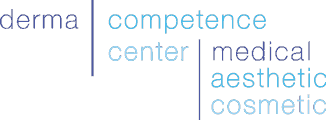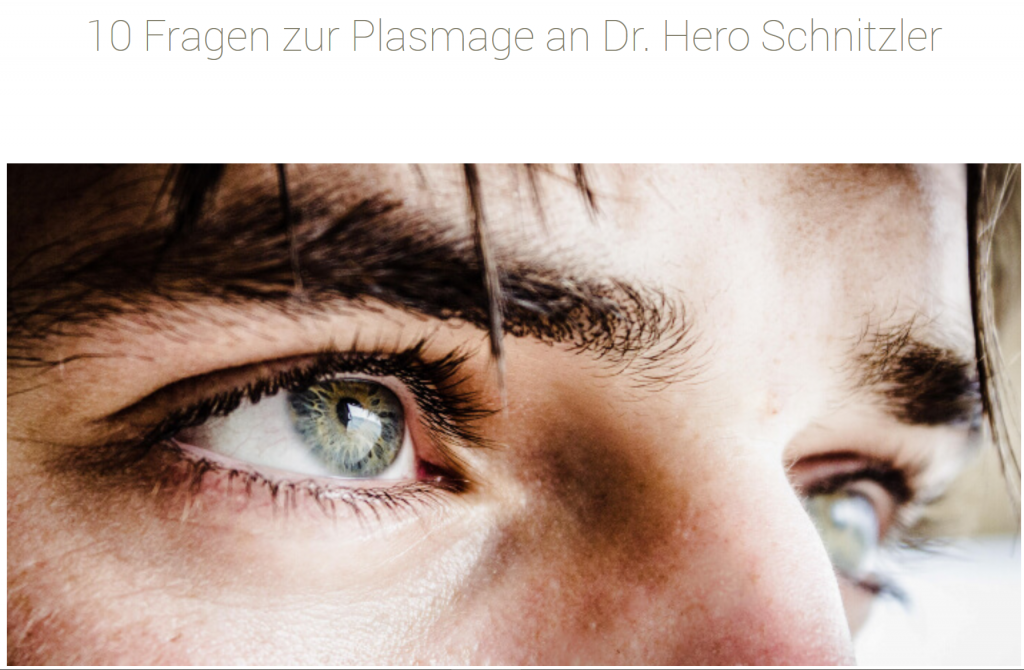cosmetic treatments, Laser medicine
Mooci, quality instance: 10 Questions for Dr. Hero Schnitzler about Plasmage!
10 Questions for Dr. Hero Schnitzler about Plasmage
We all want to look fresh and awake all the time. The older we get, the more tired looking our appearance can become. This is mainly due to the fact that over time, the skin on our eyelids loses its elasticity and begins to sag. If the sagging is not yet too excessive, surgical operations to tighten the lid area are not always necessary. We asked Dr. Hero Schnitzler, specialist in skin and venereal diseases in Zurich Enge, ten questions about the non-invasive Plasmage treatment.
What is Plasmage?
Plasmage refers to the tightening of the skin or treatment of changes in the skin using plasma energy. Plasmage is a non-invasive treatment, which I use, particularly in the case of sagging or droopy eyelids.
How does the treatment work?
Prior to treatment, a detailed consultation is carried out to discuss the patient’s wishes as well as the possibilities and limitations of Plasmage. Plasmage is performed on an outpatient basis and patients can go home shortly after treatment.
To begin, a numbing cream is applied to the skin area to be treated as local anesthesia is not required. After the cream has taken affect, the eyelids or area of treatment is disinfected. Finally, tiny dots of plasma (under 1mm) are then applied to the targeted skin area. With this method, a plasma beam, similar to a mini electric storm, is generated. The skin treated with the plasma dots then shrinks and tightens. Through the healing process, collagen synthesis is activated leading to a tightening and lifting of the skin without damage to the dermis. Over-correction of upper eyelids is essentially eliminated.
The treated area is then lightly cooled and a medicated cream is applied. Pleasing, visible results are usually achieved after just one treatment. Swelling for about two to three days as well as crusting over of the treated area is a normal after Plasmage. The crusts fall off over a period of seven to ten days and are so slight that the patient can carry on with their usual activities after this time.
What do I need to know before treatment?
Plasmage only treats the targeted area of the skin. Muscle and fat tissues are not affected. Sagging skin should not be too excessive. Otherwise, the desired results cannot be achieved with one treatment. It is possible however to repeat the procedure after two to three months should the should the desired results not be achieved with the first treatment.
How long does the Plasmage treatment take?
The entire procedure, including the time for the numbing cream to take effect, takes about one to one and a half hours. This depends of course on the size of the area to be treated. The healing phase can take about 7 to 14 days. The skin’s reaction to the treatment can be seen immediately. However, the resulting swelling and reddening recedes relatively quickly after the first couple of days.
What to I need to be aware of after the Plasmage treatment?
After the treatment it is especially important that the patient cares for the treated area. The treated skin should not be cooled and should be kept as dry as possible so that the area heals quicker. In addition, sunbathing should be avoided for ten to twelve weeks. I always recommend to my patients to use a spf 50 sunscreen and to wear protective sunglasses.
Is there any scarring?
To date I have not observed any scarring with my patients.
Does the Plasmage treatment need to be repeated?
The results from Plasmage are long-term and in most cases, one treatment is enough to obtain a visabel yet natural tightening and lifting of the upper and lower lids. Should the patient not be satisfied with the results after one treatment, it is possible to repeat the Plasmage procedure.
How long is the “down-time” after a treatment?
As already mentioned, just after the procedure, swelling occurs which is most severe and visible during the first two to three days after treatment. Subsequently, the treated area builds a crust which falls off on its own completely over approximately the next seven to ten days. After the crust is completely gone, the skin can appear slightly pink for a few more days. I usually try to schedule the treatment on a Friday afternoon so that by Monday the patients feel a bit more presentable.
what are the risks and side-effects of a Plasmage treatment and how much does it cost?
Aside from the mentioned swelling and crusting, Plasmage is a gentle and effective method to lift and tighten sagging skin with next to no side-effects.
The cost of Plasmage treatments is less than the traditional surgical lid-lifts which entail a different technique and require full or partial anesthesia.
When can I apply eye makeup again?
This depends entirely on the wound healing. Basically, makeup is first allowed once the crusts have completely fallen away. Typically, this takes about seven to ten days.
Dr. Hero Schnitzler:
Dr. Hero Schnitzler, Specialist for Skin and Venereal Diseases
Dr. Hero Schnitzler is a skin and venereal disease specialist in Zurich, Enge. There he founded the “derma competence center” and continues the practice founded by Dr. Thiessen-Wenger under a new name and concept. Laser medicine is also one of his specialty areas. Although as a dermatologist he usually works with light energy, i.e. lasers, Plasmage is for him a ideal addition to his dermatology practice, as in certain areas and indications, the laser also has its limitations and with which you cannot always achieve get the desired success.



